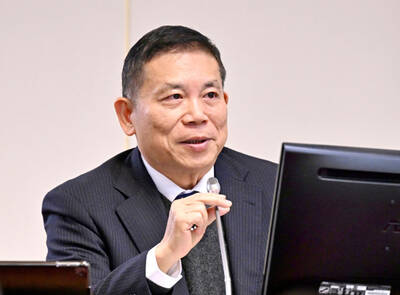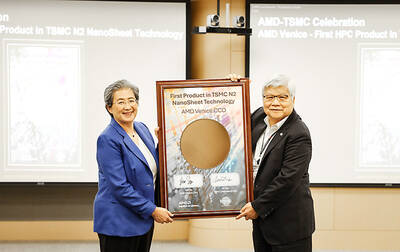Sterling on Friday hit its highest level against the euro since the end of February 2020, as easing concerns about the economic impact of the COVID-19 pandemic boosted risk-on currencies, while analysts expect more rate increases from the Bank of England this year.
Risk appetite was supported by signs that governments, despite COVID-19 cases hitting record highs, are trying to limit the economic damage by relaxing rules on isolation rather than resorting to lockdowns.
“The sterling is a risk-on currency that will benefit from the huge financial and fiscal stimulus, and a more benign pandemic outlook,” Ebury chief risk officer Enrique Diaz said.
Ebury’s short-term target for the pound is £0.83 per euro.
“Even with the removal of monetary accommodation, central banks are going to leave significantly stimulative policies in place for the foreseeable future. This is positive for risk-on currencies and is positive for the sterling,” Diaz added.
Sterling was up 0.1 percent against the euro at £0.84 per euro, after hitting its highest level since Feb. 26, 2020, at £0.8369.
It was down 0.2 percent versus the US dollar at US$1.3528.
On Thursday, the New Taiwan dollar declined by NT0.002 to NT$27.690 against the US dollar, but rose 0.17 percent from NT$27.738 on Friday last week.
The NT dollar’s growth was the highest in Asia last year, rising nearly 3 percent against the US dollar.
Last year, several regional currencies came under pressure. The South Korean won shed about 8.6 percent and the Japanese yen tumbled more than 10 percent.
Dealers said the NT dollar benefited from Taiwan’s strong export growth, as global demand for tech gadgets remained solid on the back of emerging technologies such as 5G applications, high performance computing devices, the Internet of Things and automotive electronics.
Meanwhile, Turkey’s lira on Friday has logged its worst year since Turkish President Tayyip Erdogan came to power nearly two decades ago, despite his appeal for Turks to trust his unorthodox policies of slashing interest rates in the face of soaring inflation.
The lira — by far the worst performer in emerging markets last year, as well as in the past few years — shed 44 percent of its value against the US dollar over the year and 19 percent in the past week alone.
On Friday, Erdogan called on Turks to keep all their savings in lira and shift gold into banks, saying that the market volatility was largely under control.
“As long as we don’t take our own money as a benchmark, we are doomed to sink. The Turkish lira, our money, that is what we will go forward with. Not with this foreign currency or that foreign currency,” he told a business group.
“We have been waging the battle to save the economy from the cycle of high interest rates and high inflation,” he said, reiterating his unorthodox view that high rates lift prices.
In response, the lira weakened to as far as 13.63 lira before recovering to end the day flat at 13.1875 lira.
The US dollar index, which measures the greenback against six major peers, was down 0.31 percent at 95.67, down 0.36 percent from Thursday last week.
Additional reporting by CNA, with staff writer

Taiwan will prioritize the development of silicon photonics by taking advantage of its strength in the semiconductor industry to build another shield to protect the local economy, National Development Council (NDC) Minister Paul Liu (劉鏡清) said yesterday. Speaking at a meeting of the legislature’s Economics Committee, Liu said Taiwan already has the artificial intelligence (AI) industry as a shield, after the semiconductor industry, to safeguard the country, and is looking at new unique fields to build more economic shields. While Taiwan will further strengthen its existing shields, over the longer term, the country is determined to focus on such potential segments as

UNCERTAINTY: Innolux activated a stringent supply chain management mechanism, as it did during the COVID-19 pandemic, to ensure optimal inventory levels for customers Flat-panel display makers AUO Corp (友達) and Innolux Corp (群創) yesterday said that about 12 to 20 percent of their display business is at risk of potential US tariffs and that they would relocate production or shipment destinations to mitigate the levies’ effects. US tariffs would have a direct impact of US$200 million on AUO’s revenue, company chairman Paul Peng (彭雙浪) told reporters on the sidelines of the Touch Taiwan trade show in Taipei yesterday. That would make up about 12 percent of the company’s overall revenue. To cope with the tariff uncertainty, AUO plans to allocate its production to manufacturing facilities in

COLLABORATION: Given Taiwan’s key position in global supply chains, the US firm is discussing strategies with local partners and clients to deal with global uncertainties Advanced Micro Devices Inc (AMD) yesterday said it is meeting with local ecosystem partners, including Taiwan Semiconductor Manufacturing Co (TSMC, 台積電), to discuss strategies, including long-term manufacturing, to navigate uncertainties such as US tariffs, as Taiwan occupies an important position in global supply chains. AMD chief executive officer Lisa Su (蘇姿丰) told reporters that Taiwan is an important part of the chip designer’s ecosystem and she is discussing with partners and customers in Taiwan to forge strong collaborations on different areas during this critical period. AMD has just become the first artificial-intelligence (AI) server chip customer of TSMC to utilize its advanced

Chizuko Kimura has become the first female sushi chef in the world to win a Michelin star, fulfilling a promise she made to her dying husband to continue his legacy. The 54-year-old Japanese chef regained the Michelin star her late husband, Shunei Kimura, won three years ago for their Sushi Shunei restaurant in Paris. For Shunei Kimura, the star was a dream come true. However, the joy was short-lived. He died from cancer just three months later in June 2022. He was 65. The following year, the restaurant in the heart of Montmartre lost its star rating. Chizuko Kimura insisted that the new star is still down